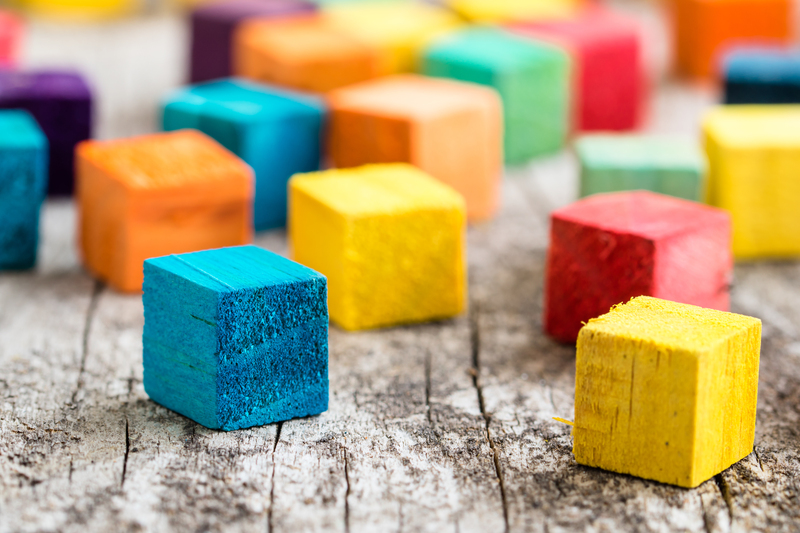How to Make a Big Impact with Minimal Plastic Waste
In today's world, plastic pollution is a growing crisis impacting our environment, health, and wildlife. Despite increasing awareness, the ubiquity of plastic makes it seem impossible to avoid. However, you don't need to overhaul your entire lifestyle to contribute positively. Making a big impact with minimal plastic waste is achievable with conscious, small, and meaningful efforts. This comprehensive guide outlines practical strategies for significantly reducing your plastic footprint.
Understanding the Consequences of Plastic Waste
Plastic waste poses significant threats to our planet:
- Environmental Damage: Plastic takes hundreds of years to decompose, accumulating in landfills and oceans.
- Wildlife Hazards: Marine and terrestrial animals mistakenly ingest plastic, often with fatal consequences.
- Human Health Risks: Microplastics are now found in water, food, and even the air, with unknown long-term effects.
By minimizing plastic waste, each individual can help alleviate these global problems and foster a cleaner, healthier future.

Start with Awareness: Examine Your Plastic Habits
Audit your plastic consumption. Spend a week tracking every piece of plastic you use or discard -- packaging, wrappers, containers, and single-use items. Identifying your main sources of waste is the first step in approaching minimal plastic living.
- Keep a simple log on your phone every day.
- Note recurring items such as plastic water bottles, shopping bags, or cling film.
- Separate unavoidable plastics (medicine packaging, certain hygiene products) from those you can easily eliminate.
Adopt the Four R's: Refuse, Reduce, Reuse, Recycle
The classic environmental mantra can give you a structure for achieving "maximum impact with minimum plastic waste." Here's how you can harness each step in your daily life:
Refuse: Say No to Unnecessary Plastics
- Decline single-use items like straws, cutlery, or condiment packets--especially in restaurants or take-outs.
- Opt for items with minimal or no plastic packaging: Shop at local markets where you can pick loose produce.
- Politely refuse 'freebies' at events or shops that come in plastic.
Reduce: Cut Down Where You Can
- Bulk buy whenever possible. Choose products in larger packages or refill stations to reduce total waste.
- Limit impulse purchases that come with excessive plastic packaging.
- Choose alternatives. Switch to bar soap, loose-leaf tea, or glass bottles.
Reuse: Make Your Plastics Last
- Use reusable shopping and produce bags every time you shop.
- Invest in durable containers and water bottles made from glass, stainless steel, or other sustainable materials.
- Repurpose containers (e.g., yogurt tubs, jars) for storage or crafts.
Recycle: Know the Rules
- Follow local recycling guidelines -- not every plastic is recyclable in every community.
- Rinse containers before recycling to avoid contaminating entire batches.
- Educate yourself about recycling symbols and sort plastics accordingly.
*Maximizing impact while minimizing plastic waste* is about making recycling an option of last resort, after refusing, reducing, and reusing.
Step-by-Step Actions to Cut Down Minimal Plastic Waste
Here are actionable steps you can implement for a significant change with minimal effort:
1. Ditch Single-Use Plastics
- Carry your own reusable water bottle and coffee cup.
- Bring cloth bags and mesh produce bags when shopping.
- Choose wooden or metal cutlery for picnics and meals on-the-go.
2. Be a Mindful Shopper
- Buy fruits and vegetables loose rather than pre-packaged.
- Select products packaged in glass, cardboard, or metal (all widely recyclable).
- Support brands and stores committed to minimal plastic waste and sustainable packaging.
3. Switch Up Personal Care
- Choose a bar of soap over bottled body wash.
- Replace plastic razors with safety razors.
- Use cloth makeup remover pads instead of disposable wipes.
4. Rethink Food Storage
- Opt for glass jars or metal containers to store leftovers.
- Use beeswax wraps, silicone lids, or cloth covers instead of cling film.
- Buy in bulk and store using reusable containers to reduce pantry plastic.
5. Clean Up Sustainably
- Try homemade or bulk-bought cleaning products in refillable containers.
- Use sponges, scrubbers, and brushes made from natural fibers.
- Avoid disposable mops and wipes -- opt for washable, reusable ones.
6. Advocate and Educate
- Share your tips on minimizing plastic waste with friends and family.
- Support local initiatives or clean-up events.
- Write to businesses or representatives asking for reduced plastic packaging.
Innovative Alternatives to Everyday Plastics
*Making a big impact with less plastic waste* is easier thanks to the wider range of eco-friendly alternatives available today:
- Biodegradable bin liners made from cornstarch.
- Bamboo toothbrushes instead of plastic ones.
- Plant-fiber or cellulose sponges.
- Cloth-wrapped or naked soaps and shampoos.
- Compostable food wrap made from beeswax.
How Small Changes Create Major Impact
When considering how to make a substantial environmental impact by cutting minimal plastic waste, it's important to recognize the ripple effect. Your everyday decisions drive demand for better products, influence others, and contribute to systemic change. Here's how:
1. Consumer Power and Corporate Response
*Brands pay attention to consumer habits.* By consistently choosing products with less or eco-friendly packaging, you reward companies making sustainable efforts. More businesses are now offering refill stations, investing in biodegradable packaging, and committing to sustainability because customers like you demand it.
2. Community and Social Influence
Your choices don't go unnoticed by family, friends, and your online network. Witnessing someone successfully reduce plastic use can inspire others to try, multiplying the overall impact.
3. Reducing Microplastics in Our Lives
By limiting the introduction of plastics into our environment, we reduce the breakdown of plastics into microplastics, which contaminate soil and water sources. Simple behavior changes can significantly cut this challenging form of pollution.
Commonly Overlooked Sources of Plastic Waste
Some plastic waste is hidden in plain sight. By detecting these lesser-known sources, you can make even more meaningful reductions:
- Tea Bags: Many brands use plastic-based sealants. Choose loose tea.
- Receipts: Some contain BPA-laminated plastic. Opt for digital receipts when possible.
- Clothing: Synthetic fabrics like polyester shed microfibers -- choose natural fiber clothing whenever possible.
- Chewing Gum: Modern gums contain plastic polymers. Look for brands using natural gum base.
- Glitter and Balloons: Typically made with microplastics; avoid for celebrations or use biodegradable options.
Overcoming Common Challenges
It's easy to feel overwhelmed or discouraged but remember: progress, not perfection is the goal. Here are ways to overcome obstacles:
-
Plastic-free items feel expensive?
Focus on reusing and repurposing, which is often cost-saving. Gradually replace plastic items as they wear out. -
Convenience vs. sustainability?
Start with the easiest swaps--like tote bags or water bottles. As habits form, bigger changes become second nature. -
Lack of local options?
Shop online for basic goods or connect with zero-waste communities to share resources. -
Family or workplace resistance?
Lead by example, share success stories, and introduce fun challenges (like 'Plastic-Free July').
Measuring Your Success
Track your progress to stay motivated. Here are some ways:
- Keep a monthly tally of single-use items avoided.
- Take before-and-after photos of your grocery hauls or kitchen supplies.
- Note money saved by refilling or reusing over buying new.
Celebrate milestones and share achievements with others! It helps reinforce your new, low-plastic lifestyle.

Joining a Larger Movement
By striving for minimal plastic waste in your own life, you take a stance for a healthier planet. But you can go further by contributing to wider efforts:
- Participate in local clean-up events to remove plastic litter from your community.
- Advocate for policy changes or bans on single-use plastics at your local, regional, or national government.
- Educate others about the impact of plastics and how small steps add up.
- Support eco-friendly businesses and innovations that prioritize sustainable packaging.
Conclusion: Every Effort Counts
Making a big impact with minimal plastic waste is not about perfection, but about conscious progress. Consistently small choices--like saying 'no' to single-use items, opting for reusable alternatives, and being a mindful consumer--create a cumulative effect that benefits the planet, our health, and future generations.
Your daily actions truly matter: every plastic item you refuse, reuse, or recycle makes a difference. Start with a single habit today, and watch as your influence grows in your home, workplace, and community. Welcome to the movement for a plastic-smart world!